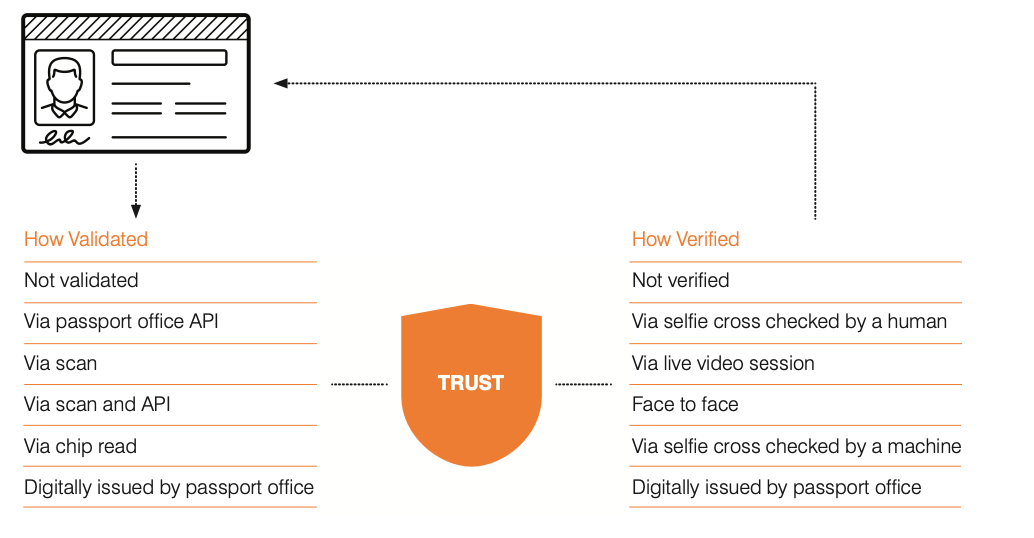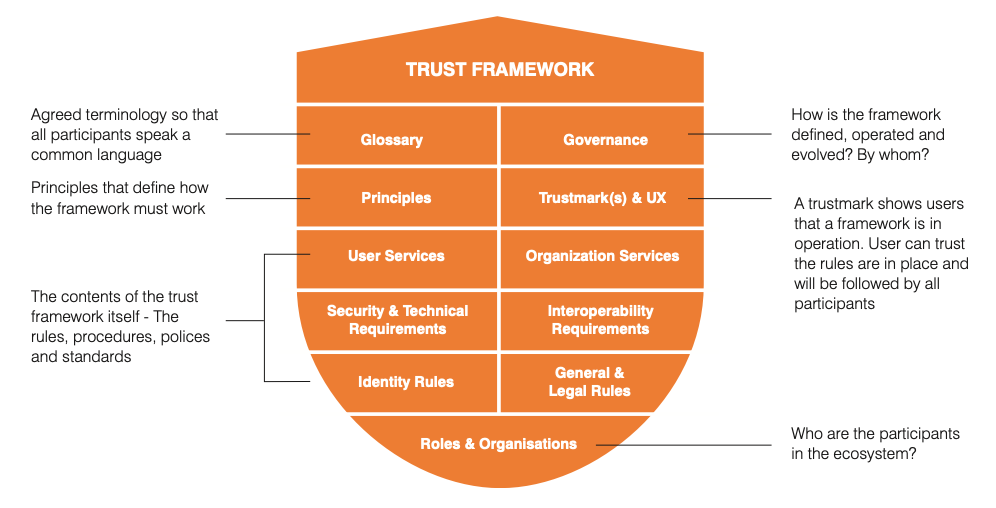
|
General area |
It’s important that organizations receive the right information from a Digital ID to meet their rules for dealing with individuals. These rules might be internal risk based rules, or they may be rules set by your regulator. This is where a trust framework comes in.
For example, if you are going to accept a digitized passport as a form of ID, how was the digital version of the passport created?

Different methods of validating the passport and verifying it belongs to the user result in increasing levels of trust that the passport is genuine.
This principle applies to all forms of credential.
-
How was it validated?
- How is the credential verified as belonging to the user?
You must be confident that a Digital ID is working to the rules you require. This is part of the role of a trust framework and trust schemes.
A trust framework will set the rules for Digital ID. Not just the credential validation and verification rules, but legal, technical, operational and governance rules too:

OIX's Guide to Trust Frameworks for Smart Digital ID futher explores what a Digital ID is and why trust frameworks mean you can use them with confidence.



